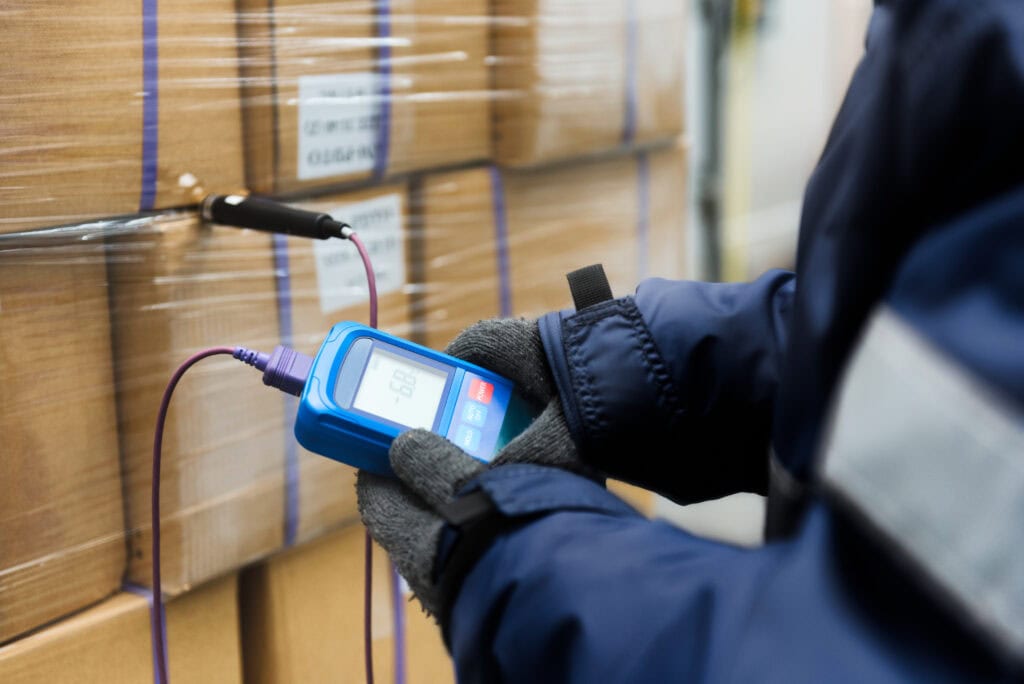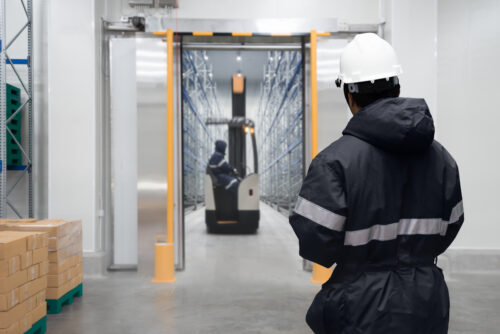Best Practices for Effective Cold Storage Management

Effective cold storage management requires a combination of precise temperature control, robust inventory management, and strict safety measures. By following these best practices, businesses can ensure the quality and integrity of their temperature-sensitive products.
Cold storage management is a critical component of the supply chain, particularly for industries dealing with perishable goods, such as food, pharmaceuticals, and cosmetics. The cold chain is essential in these operations, ensuring the safe and efficient delivery of temperature-sensitive products. Effective cold storage management ensures that temperature-sensitive products are stored in optimal conditions, preserving their quality and extending their shelf life. In this article, we’ll explore the best practices for cold storage management, from understanding its importance to selecting the right cold storage partner.
Understanding Cold Storage
Definition and Importance of Cold Storage
Cold storage warehouses are specialized facilities designed to store products that require specific temperature conditions. These facilities play a vital role in preserving the integrity of perishable goods by controlling temperature fluctuations that could lead to spoilage or degradation. Whether it’s fresh produce, dairy products, or pharmaceuticals, cold storage ensures that these items maintain their quality from the time they are stored until they reach the consumer.
Brief History and Evolution of Cold Storage
The concept of cold storage has ancient roots, with early civilizations using natural ice and snow to preserve food. However, it wasn’t until the 19th century, with the advent of refrigeration technology, that modern cold storage began to take shape. Early refrigeration technology used cold air generated by passing cold refrigerant through tubes to preserve products. Today, cold storage warehouses are equipped with sophisticated temperature control systems, allowing for precise management of a wide range of products. The evolution of cold storage has been instrumental in the growth of global trade, enabling the safe transport of perishable goods across long distances.
Benefits of Using a Cold Storage Warehousing Partner
Partnering with a third party logistics provider (3PL) or cold storage warehousing expert offers several advantages for businesses. By outsourcing cold storage services, companies can reduce costs, enhance efficiency, and focus on their core operations. Cold storage partners bring specialized knowledge in temperature-controlled environments, ensuring that products are stored under optimal conditions. This partnership not only improves supply chain management but also helps businesses avoid the significant investments required to build and maintain their own cold storage facilities.
Key Features of a Cold Storage Warehouse
Easy Access for Transport and Logistics
For a cold storage warehouse to operate efficiently, it must be easily accessible for transport vehicles. This means having ample docking bays and a well-designed layout that facilitates the smooth loading and unloading of goods. Proximity to major transportation hubs, such as highways, railways, and airports, is also crucial for ensuring timely deliveries and reducing transportation costs.
Sufficient Storage Capacity to Meet Your Needs
The storage space and capacity of a cold storage warehouse is another critical factor. The facility should be equipped to handle various types of products, including fresh produce, frozen foods, and pharmaceuticals. Flexible storage options, such as pallet racking and shelving, allow the warehouse to maximize space utilization and meet the diverse needs of its clients.
Efficient Inventory Management Systems
A robust inventory management system is essential for maintaining product quality and minimizing waste. Top-tier cold storage facilities employ advanced systems for real-time monitoring and tracking of inventory, ensuring that every product is accounted for and managed efficiently. This level of oversight helps reduce errors, improve efficiency, and ensure that products are delivered on time and in optimal condition.

Choosing the Right Cold Storage Warehouse
Location and Proximity to Production and Customer Bases
When selecting a cold storage warehouse, location is a key consideration. A strategically located warehouse near production sites and customer bases can significantly reduce transportation costs and improve delivery times for temperature-sensitive goods. This proximity ensures that products spend less time in transit, reducing the risk of temperature fluctuations that could compromise their quality.
Accessibility to Roads, Railways, and Airports
Efficient transportation and logistics are vital for cold storage operations. A warehouse that is easily accessible by road, rail, and air ensures that products can be moved quickly and efficiently, minimizing delays and ensuring timely delivery to customers. When evaluating potential cold storage partners, consider their proximity to major transportation routes and hubs.
Cold Storage Operations
Temperature Control and Monitoring Systems
Effective temperature control is the cornerstone of cold storage management. Refrigerated cold storage facilities are designed to maintain specific temperature ranges, typically between 33° to 55° F, to ensure the quality and longevity of products without freezing them. Advanced temperature control and monitoring systems are essential for maintaining the precise conditions required for different types of products. Real-time monitoring allows for immediate adjustments, ensuring that temperature-sensitive goods are stored in the best possible environment, reducing the risk of spoilage.
Humidity and Air Quality Control
In addition to temperature, humidity and air quality are critical factors in cold storage. Improper humidity levels can lead to product degradation, while poor air quality can affect the integrity of stored goods. Cold storage facilities should be equipped with systems that control humidity and ensure clean air circulation, protecting the quality of temperature-sensitive products.
Managing Power and Operational Disruptions
Power disruptions can have severe consequences for a cold storage warehouse, potentially leading to the spoilage of entire shipments. To mitigate this risk, facilities should have contingency plans in place, including backup power systems and emergency response protocols. Ensuring that these measures are in place can minimize the impact of operational disruptions and safeguard the integrity of stored products.
Safety and Security in Cold Storage
Physical Health and Equipment Longevity
Working in cold storage environments presents unique challenges for both employees and equipment. The cold temperatures can affect workers’ physical health, and the equipment used must be durable enough to function effectively under these conditions. Cold storage facilities should prioritize safety measures, such as providing appropriate gear for employees and ensuring regular maintenance of equipment to prevent breakdowns.
Implementing Automated Solutions and Technology
Automation and technology are increasingly important in cold storage operations. Automated solutions, such as robotic palletizers and automated storage and retrieval systems (ASRS), can enhance efficiency and reduce human error. These technologies not only improve operational efficiency but also help in maintaining consistent quality and safety standards.
Following OSHA Guidelines and Regulations
Compliance with Occupational Safety and Health Administration (OSHA) guidelines is essential for maintaining a safe working environment in cold storage facilities. Adhering to these regulations helps protect workers and ensures that the facility operates within legal requirements. When selecting a cold storage partner, consider their commitment to safety and regulatory compliance.
Inventory Management and Control
Monitoring and Tracking Inventory in Real-Time
Real-time inventory tracking is a best practice in cold storage management. Accurate monitoring allows for better decision-making, reduces the likelihood of stockouts or overstocking, and ensures that products are rotated according to their shelf life. This level of control is crucial for maintaining the quality and integrity of temperature-sensitive goods.
Reducing Errors and Improving Efficiency
Effective inventory management systems are designed to minimize errors and enhance operational efficiency. By integrating advanced software and automation technologies, cold storage facilities can streamline processes, reduce manual labor, and improve accuracy. This approach not only boosts productivity but also helps in maintaining the highest standards of product quality.
Cost-Effective Cold Storage Solutions
Understanding the Costs of Cold Storage
The cost of cold storage varies based on several factors, including the type of products, storage duration, and specific temperature requirements. It’s important for shippers to understand these costs and work with a cold storage partner that offers transparent pricing. By doing so, companies can budget effectively and avoid unexpected expenses.
Building and Retrofitting a Cold Storage Warehouse
For businesses considering building or retrofitting a cold storage warehouse, it’s essential to factor in the significant investment required. Partnering with an experienced cold storage provider can offer a more cost-effective solution, allowing businesses to leverage existing infrastructure and expertise rather than investing in their own facilities.
The Cost of Storing Goods in a Cold Storage Warehouse
Storing goods in a cold storage warehouse involves ongoing costs, including rent, utilities, and labor. A reliable cold storage partner should provide clear and detailed cost estimates, helping businesses understand the financial implications and plan accordingly. Transparent pricing models enable businesses to manage their cold storage expenses more effectively.
Value-Added Services in Cold Storage Warehousing
Customized Solutions for Specific Industries
Different industries have unique cold storage requirements. A cold storage provider that offers customized solutions tailored to specific industries—such as food, pharmaceuticals, or cosmetics—can provide significant value. These tailored services ensure that products are stored in conditions that meet industry-specific standards and regulatory requirements.
Additional Services and Amenities
Many cold storage warehouses offer additional services, such as freight brokerage, managed warehouse services, and value-added services like packaging and labeling. These amenities provide a comprehensive solution for businesses, allowing them to streamline their supply chain operations and reduce the need for multiple service providers.
Partnering with a Cold Storage Expert
Working with a cold storage expert can significantly enhance a business’s supply chain efficiency and reduce costs. A strong partnership is built on trust and reliability, with the cold storage provider acting as an extension of the business’s operations. When selecting a cold storage partner, consider their expertise, reputation, and commitment to meeting your specific needs.
The Future of Cold Storage
Trends and Innovations in Cold Storage
The cold storage industry is continuously evolving, with new trends and innovations emerging in areas such as temperature control, automation, and sustainability. The cold chain industry plays a pivotal role in driving these trends and innovations, ensuring the integrity and safety of temperature-sensitive products. Staying informed about these developments is crucial for businesses that rely on cold storage. By partnering with a forward-thinking provider, companies can stay ahead of the curve and benefit from the latest technological advancements.
The Role of Technology in Cold Storage
Technology plays a central role in modern cold storage operations. From advanced temperature monitoring systems to automated inventory management, technology enables more efficient and accurate operations. Investing in the latest technology is essential for cold storage facilities looking to improve their services and remain competitive.
The Importance of Sustainability and Energy Efficiency
As environmental concerns continue to grow, sustainability and energy efficiency have become key priorities in cold storage. Reducing energy consumption not only lowers operational costs but also minimizes the environmental impact of cold storage facilities. Businesses should look for partners that are committed to sustainable practices and energy-efficient solutions.
Conclusion
Recap of Best Practices for Effective Cold Storage Management
Effective cold storage management requires a combination of precise temperature control, robust inventory management, and strict safety measures. By following these best practices, businesses can ensure the quality and integrity of their temperature-sensitive products.
Importance of Partnering with a Reliable Cold Storage Provider
Partnering with a reliable cold storage provider is essential for businesses looking to optimize their supply chain operations. A trusted partner brings expertise, efficiency, and innovation, helping businesses reduce costs

